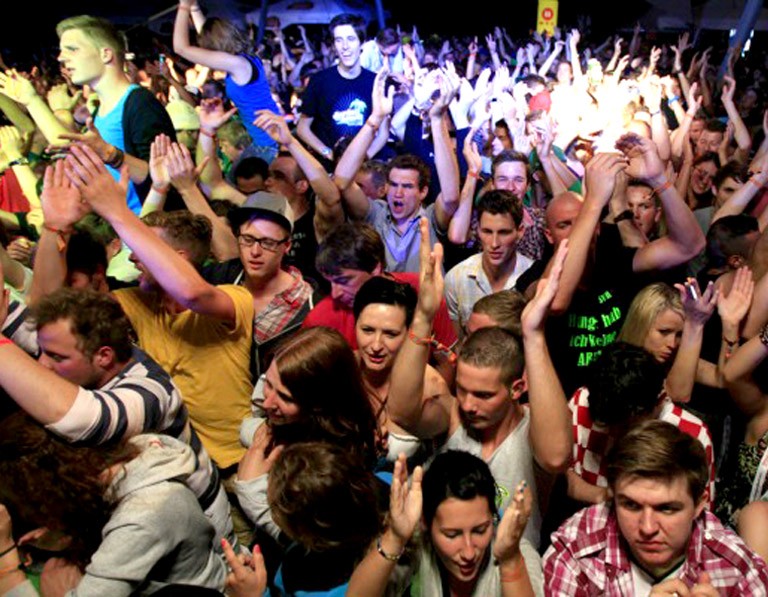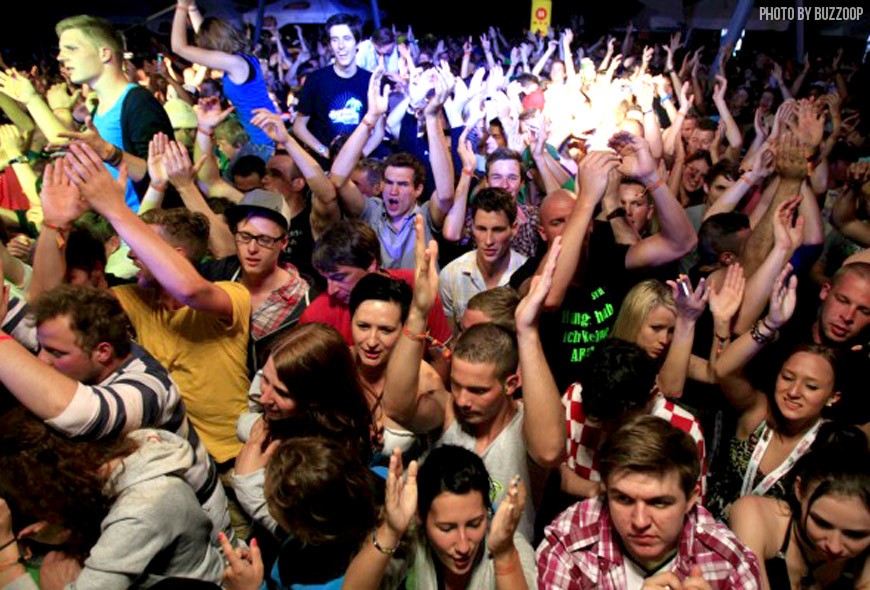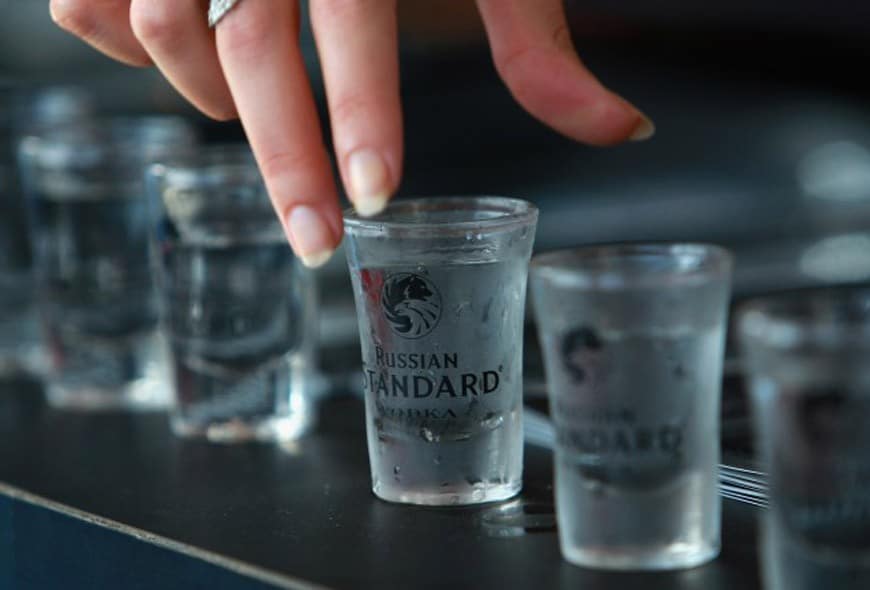How Millennials Turned Partying into Rage Culture
An op-ed on rage culture…
Memory is a strange thing. While the past provides the lens for the present, the present colors everything in our past. It’s a curious feedback loop for sure, one that always has me baffled. That being said, I can’t claim that the moment in question set the tone for the year, but it certainly started something. That moment was UC Santa Barbara’s annual welcome back concert, which ushers in the new academic year. It’s traditionally attended by throngs of inebriated underclassmen, with many seniors scoffing comfortably from Playstation couches and cigarette-stained ocean balconies.
In recent years, acts have included Chromeo and Flying Lotus, artists in their own right, but the curse of Isla Vista, the neighboring college town known for its excessive party scene, has doomed many a performance to mediocre trap music. 2013 saw more of the same, with Borgore at the decks. I have to admit that seeing one of the world’s most misogynistic artists chosen to welcome students to the school was a bit unsettling. However, I’m the last one to say no to a free show, so I decided to head over to Storke Plaza (in the center of campus) and soak in the absurdity. Unfortunately, the Israeli artist was playing to the crowd, with trap sandwiched between big-room house: a music snob’s nightmare.
Kids squeezed past each other under strobe lights, striving to stand as close as possible to the stage for selfies and an earful of sub-par bass. Looking around at the confused antics of my peers, a few familiar questions floated through: Does anyone actually like the music? Do people think this qualifies as dancing? Are people thinking? Is it too late to buy a burrito? Finally, I settled on, “How could I sum up the scene in a word?” Suddenly, I realized that the word had already been chosen for me, chosen by the thousands of students here and elsewhere as they slam back plastic vodka and hit the streets looking for loud noises, bright lights, and cheap sex to fill the void: RAGE.
‘Let’s rage’: It’s a popular refrain, but what does it mean? I suppose it’s a bit obvious that it refers to blowing off steam, so perhaps a more interesting question is, why do college students (and, for that matter, plenty in their twenties who still follow the university pattern) feel the need to participate in this destructive ritual every weekend? What drives young adults to call partying ‘rage?’ Below are a few takes that might unravel some secrets:
Rage Culture as a Ritual
It’s a social pattern that repeats itself, week in, week out, with a shared vocabulary, symbolic rites, the whole nine yards. From repeated terms like ‘wasted’ and ‘fucked up,’ the aggressive, destructive, and can we say, unhappy nature of the phenomenon comes to light. When we consider how quickly the events of the weekend are swept under the table, it seems that rage occurs in a sort of timeless space, a familiar pattern that becomes more and more automatic as students and young people accustom themselves to the norm (which, in Isla Vista, certainly fits the theme). It’s an initiation of sorts, a way to prove oneself in an age with few concrete standards of man-or womanhood. In the Greek system, the initiation aspect is central.
Rage as a Means to Obliteration
Rage is a sought-out activity because of its destruction, not just of our ability to think, not just of our standards, but, crucially, of the actions we take during the week. Obviously, baptism by cheap liquor does nothing to absolve or change the negative aspects of life and its stresses. Raging is just another thing to forget. The sweet oblivion of the blackout is the perfect solution-drink to forget your week, drink more to forget the forgetting.
Rage as Promise
By the time students enter college, many are already hooked on rage culture. It’s broadcast in pop music, movies, and more. It’s sold as exciting, appealing as a panacea to exams, break-ups, and the expectations of parents, who often fund the whole misadventure. But why do college students need to forget their weeks? Especially in the paradise that is Santa Barbara, where sunsets paint the sky in horizontal rainbows and summer stays 8 months each year?
I’m not sure, but I do have some ideas.
First, rage has to be recognized as a nationwide phenomenon. While Isla Vista may be one of the least subtle college towns, frathouse basements are equally sticky from Berkeley to the Ivy League. As a broad phenomenon, perhaps it can be understood as one of the byproducts of America’s educational and corporate climate. In this world, bachelor’s degrees are losing value at a pace only surpassed by increasing tuition rates. Kids taught from an early age that a college degree will guarantee them a job are waking up to the reality that their best bet may be Starbucks. Many would be better off without the college experience. Perhaps this wouldn’t be an issue if blue-collar work was still respected, but in the information era, the myth that college is for everyone has been spread all too well by the industrial education system.
This system excels in turning out mass-produced batches of students, but individual critical thought is often left by the wayside. The result is that many students are only taught to repeat what they are told is right. Instead of finding a self-sufficient sense of identity and truth, many are afraid to embark on introspection and settle for the standard of normality. When parents, teachers, and, most importantly, friends point to college, they fall in line. Chances are good that they’ll fall in line with the existing social cycles as well. The result is a student population that feels trapped, loudly crowing only the façade of independence. Add crippling student debt, which now exceeds $1 trillion nationwide, and suddenly rage seems like the most reasonable answers. To build on Sartre, you can’t rock the boat if you’re rowing against the current of debt. It’s the hangover that millions won’t forget.
So the next question, the crucial one, is this: How can rage be turned to joy? Due to the complexity of the problem, there are certainly many angles to take, but since I’m a college student, the majority are closed to my peers and I. What’s certain is that the answer will be different for each person, and it will relate to power.
Many students and young people who live in places where rage culture reigns supreme only have power over themselves. While this may seem insignificant, it is at least something. The beauty of human creativity is that we all can be catalysts for change. For example, within Isla Vista, under the noise, lies a creative counterculture that brings real offerings to the table, with literary arts magazines, bands, poets, djs, painters, and many more taking part. Just as rage becomes a cycle, innovation feeds off of constant input. While college students may not have lots of capital, they sit on the mother lode when it comes to creativity. When they collaborate, personal transformations have the capacity to start cultural awakenings.
On the structural level, institutions need to foster an environment that allows personal and cultural growth to blossom. At UCSB, is seems as though the university has embraced defeat. The Borgore concert is a prime example. The fact that a publicly funded university sponsored such moving lyrics as “the thing I love the most is cumming on your face, suck it bitch” on campus is appalling. What sort of perspective did that memory lend to the thousands of freshmen looking to make Isla Vista their home? Especially in recent months, police patrols have increased, lighting has improved, and steps have been taken to improve security. All this is fine and good, and, thanks to rampant hooliganism, it’s necessary. However, no positive change can come from a purely negative enforcement policy, and that’s just what a police force is. Real cultural revolutions-which is what Isla Vista needs, can only be facilitated by institutions. They start and end on the ground.
When they do begin, within a small circle of friends or a larger community, rage culture can simply be put into proper context for partying: celebration.












